Streamers & pulling flies
{{start}}
It’s a subtle distinction between what I consider streamers and pulling flies and what I consider ‘loch style flies’ . The main difference for me is that whilst each of the flies below work well in a team of flies they also fish well by them selves. My favorite woolly bugger flies and some of nymphs such as my damsel nymph and my mudeye are the same. The flies in my ‘Loch’ selection are different. Sure you could fish them on their own but by in large I regard each of my ‘Loch’ flies as fishing best when fished in a team of flies. There are heaps of flies to choose from. These are the ones I carry in my Lake fly box along with my Lock flies.
{{end}}
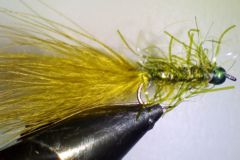
{{+1}}Straggle fritz bugger{{-1}}
{{start}}
'I switched to a slime line and put a Black Straggle Fritz Taddy on the point, kept the Damsel on the dropper and, due to the weed, discarded the top dropper completely. At the end of one retrieve I had a cracking take on the hang and bullied a near 5lb rainbow into the net.'{{end}}

{{+1}}Fuzzel Katie – Kate McLaren variant{{-1}}
{{start}}
I particularly find the yellow version useful when yellow winged hoppers or other insects with yellow parts are on the trouts menu. At other times pink is a great trigger color and when combined with the flash of the holographic tinsel and or the movement of the fuzzeled body and the soft front hackle are often enough to trigger a response.{{end}}

{{+1}}Kate McLaren variant – fuzzel Katie{{-1}}
{{start}}
Seldom, at least in my case, fished alone this fly is a great top dropper or bob fly when lock style fly fishing. I particularly find it useful when yellow winged hoppers or other insects with yellow parts are on the trouts menu. It looks nothing like a hopper of course but I think the little bit of yellow in the tail as well as the movement of the fuzzeled body and the soft front hackle are often enough to trigger a response.{{end}}
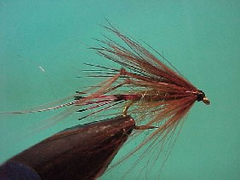
{{+1}}Green Peter – daddy variant{{-1}}
{{start}}
As many of you will be aware there is a Welsh fly called a "Green Peter". It was designed as a dry fly but is also a great Loch Style bob or middle dropper fly.{{end}}
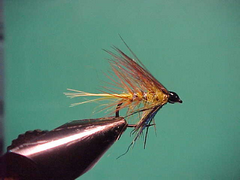
{{+1}}Invicta variant{{-1}}
{{start}}
The original Invicta was created by eminent English fly tier and tackle dealer James Ogden in the 1870's. With just a few tweaks this fly is as relevant today as it was 140 odd years ago. This is a great attractor fly at times when yellow winged hoppers and other insects with yellow body parts are around and yellow is a trigger color for trout.{{end}}
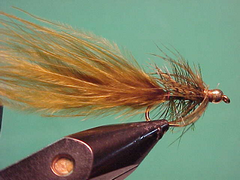
{{+1}}Shrek – original{{-1}}
{{start}}
This fly was out of left field as far as I am concerned and when first introduced to it had no great expectation of it finding its way into my fly box. I was wrong. The bright tinsel body certainly stands out and rather than spooking fish as I expected it seems to trigger a response from trout particularly in “smelt” water or slightly discolored or tannin water.{{end}}
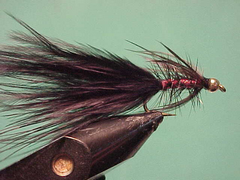
{{+1}}Shrek- Chatto’s Fiona{{-1}}
{{start}}
A similar fly is also known as a "Bloody Mary" but I use the name 'Fiona' (Shrek's lady) as this fly is the same fly as the Shrek just different colored materials. Both are basically Woolly Buggers by design and just as the emerald green is a great option in the Shrek the red works well in combination with the black tail of the Fiona.{{end}}
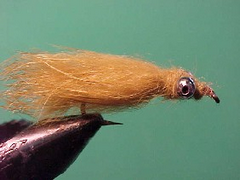
{{+1}}Patriot{{-1}}
{{start}}
I am not sure of the source of this fly but I have had the recipe in my system for a long time and certainly before the onslaught of Google and internet searching. In the interest of full disclosure I decided to get some history on the fly and so searched 'patriot fly'. That search gave me hits on a red and blue bodied dry fly but nothing on an olive green wet fly.{{end}}
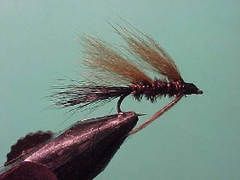
{{+1}}Tom Jones variant{{-1}}
{{start}}
It has nothing at all to do with the welsh singer by the same name. The original was tied with fur wings and fur body whereas my variant is tied with fur wings but the body has been replaced with peacock herl, which is one of my favorite fly tying materials, and an under-hackle and beard of brown hackle fibers has been added. They are a good buggy looking fly that work well in both prospecting and polaroiding situations.{{end}}

{{+1}}Marabou mudler{{-1}}
{{start}}
In the late 1880's a Bavarian immigrant to America tied a fly because worsening arthritis meant that he could no longer collect live minnows for bait. The fly was a Muddler Minnow and its variants are as relevant today as when it was first tied. Whilst the original and many of the variants continue to be great bait fish imitations many of the variants also have other applications.{{end}}













